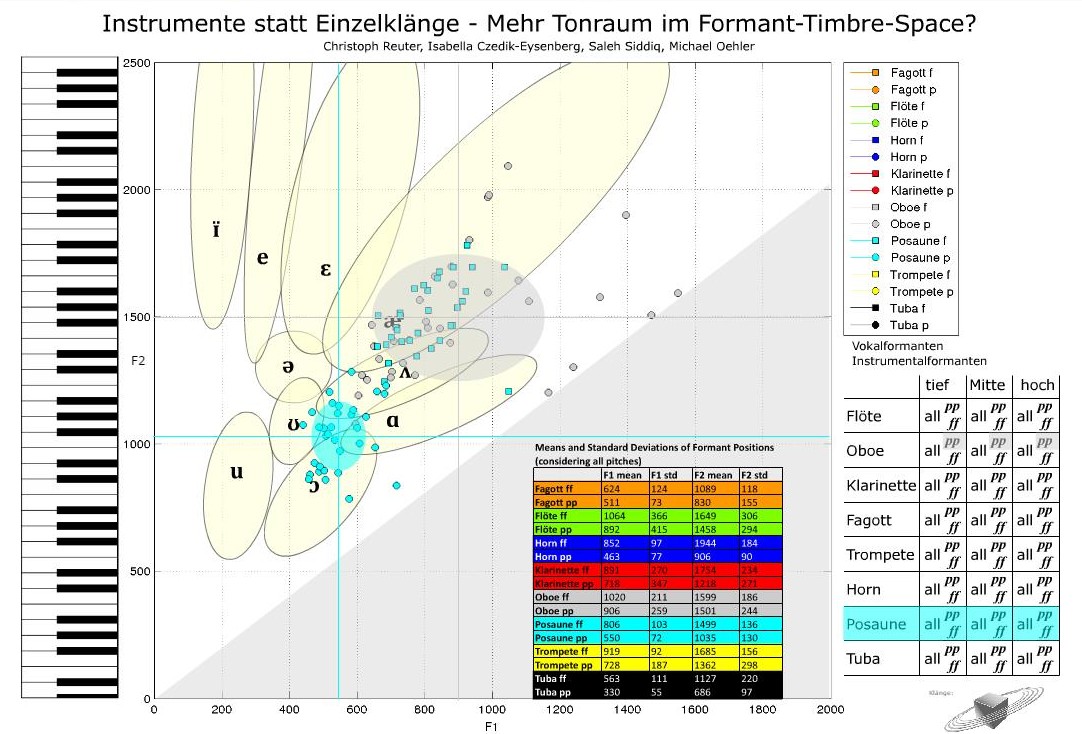Wind instrument sounds in formant field

- X axis: Formant 1
- Y axis: Formant 2
On the right side: Click on instrument names, dynamics, registers to show their location in formant field (circles: played in pp, squares: played in ff). Click on the circles and squares to listen to corresponding sound examples. Click on "Vokalformanten" to show the corresponding vowel formants. Click on "Instrumentalformanten" to show the means and standard deviations of the formant positions (just click on the instrument names in the colored table).
On the left side: Click on the keyboard to show the formants when played in a single pitch.
- Non-overlapping main formant areas lead to fragmentary masking: Musical instrument timbres playing in unison can be separated easily, i.e. they can be distinguished very well from the total sound mixture. (Fricke 1976 u. 1986)
- Overlapping main formant areas lead to timbral blending: Homogenous blend of musical instrument timbres playing in unison, i.e. it is not easy or possible to separate single instruments from the total sound mixture. (Reuter 1996)
Publication: in preparation.
Poster: Christoph Reuter, Isabella Czedik-Eysenberg, Saleh Siddiq, Michael Oehler: Instrumente statt Einzelklänge - Mehr Tonraum im Formant-Timbre-Space? "Akustik und Musikalische Hörwahrnehmung" - 32. Jahrestagung 2016 der Deutschen Gesellschaft für Musikpsychologie (DGM), Universität Wien, 9.-11. September 2016.
Reference: Sirker, Udo: Strukturelle Gesetzmaessigkeiten in den Spektren von Blasinstrumentenklängen. In: Acustica 30, 1974, S. 49-59.
BACK
